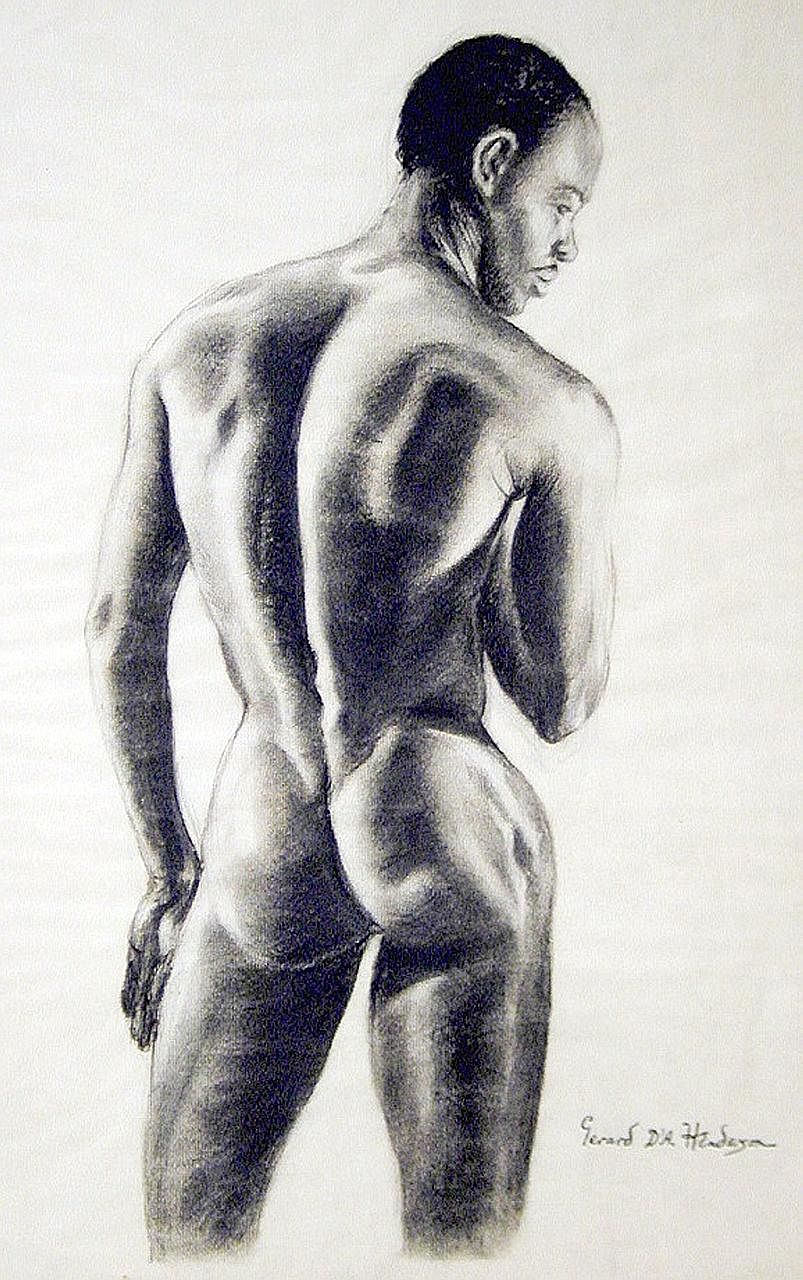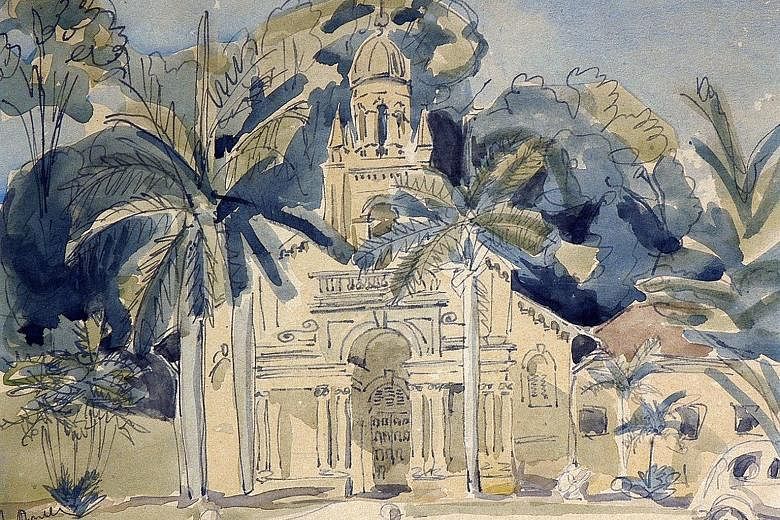In 1963, art critic Marco Hsu published a series of essays on the cultural history of the people of the Malayan peninsula. Through his analysis of the development of art history in Malaya and Singapore, he raised questions about Malayan identities and culture for a fledgling nation.
The NUS Museum presents Between Here And Nanyang: Marco Hsu's Brief History Of Malayan Art, an exhibition of art and artefacts referred to by Hsu, placing a spotlight on issues of identity and nation-building.
PRESBYTERIAN CHURCH (undated)
By Roy Morrell, watercolour on paper, 26.3x32.7cm
The artist was instrumental in the early years of Singapore's art history, when he was a founding member of the Singapore Art Society. He was representing the University of Malaya, where he was a professor of English literature.

BLACK TORSO (undated, possibly circa 1952)
By Gerard Henderson, charcoal on paper, 59x40cm
This drawing was a gift from former Commissioner-General for South-east Asia Malcolm MacDonald, a patron of the arts. This may have been one of the four nude studies done by the artist that was banned at the sixth annual YMCA Art Exhibition in 1952 for being inappropriate.

THREE FRIENDS IN WINTER (1953)
By Wu Tsai Yen, finger painting in Chinese ink, 97x33.5 cm
Another gift from MacDonald, this painting is of the traditional Chinese theme of the "three friends of winter" - bamboo, plum and pine - with a twist, evoking the traditional Christmas imagery of ivy, holly and Christmas pine.

PORTRAIT OF HO YEE PING (1953)
By Lee Boon Wang, charcoal on paper, 32x24cm
The artists of Equator Art Society, which counts Lee as a founding member, were proponents of a social-realist style. The society also offered drawing lessons for aspiring artists, who often sketched portraits of one another. This work demonstrates the emerging network among artists in the lead-up to Singapore's independence.

UNITED (1954)
By Tan Tee Chie, woodblock print, 20.5x31cm
The Chinese- educated community had strongly disagreed with changes proposed by the colonial government, particularly in language and education policies. This work is emblematic of the Chinese student community's solidarity against what it saw as the entrenchment of foreign imperialist policies.

BUST OF A FEMALE FIGURE (undated)
By Lim Nang Seng, clay, 39x54x23.5cm
This bust by the sculptor may have been a reference to the women of Bali, or the aboriginal population of Borneo and Sarawak. The latter two territories were included in the merger with the Malay federation and Singapore in 1963.

LANDSCAPE WITH CATHAY BUILDING (1959)
By Ng Eng Teng, oil on canvas, 61x73.5cm
This work reflects emerging modern urbanisation as Singapore moved towards independence and away from colonial planning.

ABSTRACT COMPOSITION (1963-64)
By Goh Beng Kwan, collage on canvas, 82x66.5cm
Goh was one of several artists noted for furthering their studies in the fine arts in the 1960s. He headed to New York and others left for cities such as Berlin, indicating an awareness of new artistic expression developing in the post-war years in the West.
WHERE: 50 Kent Ridge Crescent, NUS Museum, University Cultural Centre MRT: Clementi/Kent Ridge WHEN: Till Aug 28, 10am to 7.30pm (Tuesday to Friday), 10am to 6pm (weekend), closed on Monday and public holiday ADMISSION: Free INFO: www.facebook.com/nusmuseum
Nur Asyiqin Mohamad Salleh

